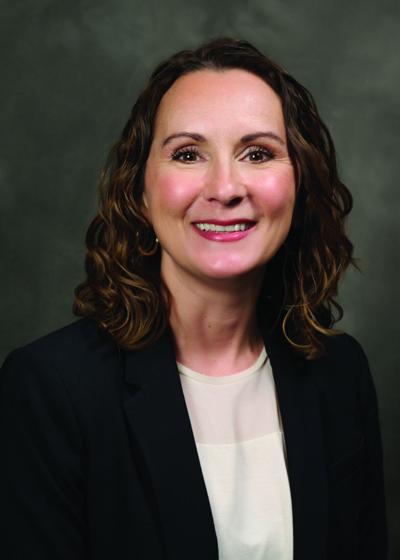
Amy Hunter, vice president of patient care systems and associate chief nurse executive at BJC Center for Clinical Excellence
Photo provided by BJC
NURSING PROGRAM:Â Barnes College of Nursing (RN, BSN, MHS, CPHQ)Â
AREA OF FOCUS:Â Patient care systems
YEARS OF SERVICE:Ěý29
When Amy Hunter started her nursing career nearly three decades ago, all patient documentation was done with pen and paper.
Today, those writing utensils have been replaced by virtual nursing technology, scheduling apps and electronic medical records that patients can access on their mobile devices.
And the best part? Through collaborative partnerships between key hospital units and other departments, Amy Hunter has helped lead that change.
Teamwork makes the dream work
“I’ve always been very inquisitive and analytical, and I love to gather data and find areas within the system to improve patient care,” said Hunter, vice president of Patient Care System and associate chief nurse executive. “Together, through our ongoing partnerships with nurse leaders, bedside nurses, technology teams, clinical asset teams and our pharmacy colleagues, to name a few, we are able to create a better patient care environment.
“Most people think a patient care team is made up of just the doctors and nurses,” she said. “But it’s not. A patient care team includes all the other departments working together behind the scenes to ensure that a high level of care is available.”
With the exception of two, two-year stints in infectious diseases/internal medicine at Washington University, Hunter has accumulated 26 years of service at BJC — the last 14 the BJC Center for Clinical Excellence. While providing clinical care as a student at Barnes College of Nursing and following graduation in the medical-surgical unit, Hunter realized that each hospital unit functioned very differently, with some more efficient than others.
“That really intrigued me and got me interested in ways to improve certain processes, as well as the human factors involved with those improvements. For example, how do we design an environment to put things in place so nurses can deliver the most efficient high-level care possible?” she said. “We go into nursing to care for people and to help them, and we realize the lack of technology or the environment or things we encounter along the way can completely impact how effective we can be at our job. So, how can we fix that?”
Streamlining
Hunter has worked to do just that — to streamline and improve the processes that affect patients across the BJC system. Her team helps move adult patients throughout the system, including those transferring from other hospitals; ensures patients are placed in the right unit to receive the care they need; and addresses staffing shortages using µţ´ł°ä’s in-house team of traveling nurses, student nurses, patient care techs and patient observers.
Collaboration and support
Another part of her job involves supporting the nursing workforce. The introduction of the BJC Flex app, for example, has made it easier for nurses to view and sign up for extra shifts online, replacing the previous manual, time-consuming process. The app was developed in partnership with bedside nurses, nurse leaders, Healthcare Innovation Lab, µţ´ł°ä’s IT and digital services, and Human Resources.
A similar collaborative team helped launch the Virtual Nursing unit, which is made up of highly experienced nurses who provide remote care in collaboration with bedside nurses during patient admission and discharge. The team is also available 24/7 to provide guidance and support throughout any shift.
For Hunter, patient care lies at the core of everything she does. “My goal is to ensure those working on the frontline of patient care have everything they need to work safely and effectively. They have a very challenging job and I just want to make it as easy as possible for them to provide excellent care.”
Even though Hunter spearheads these substantial projects, she makes it clear that it is a team effort. “While I may bring the teams together and sponsor the projects as a leader, it is truly the teams that make it happen to ensure success of the initiatives.”







